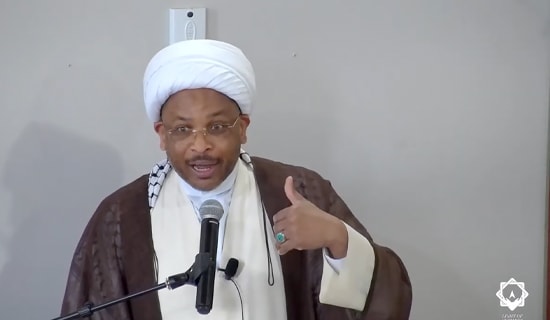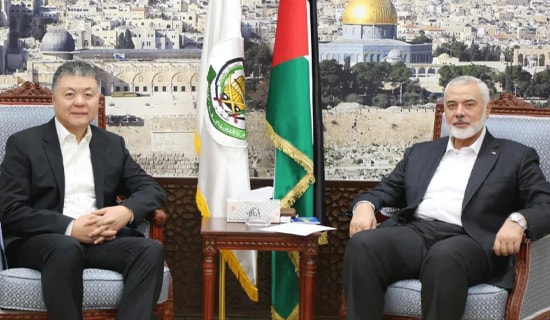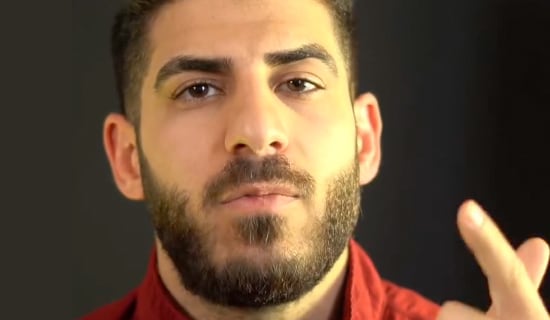Introduction
National flags are symbols of a nation's identity, history, culture and geography. One cannot imagine France without Le Tricouleur, Britain without the Union Jack, and the United States without the Stars and Stripes. A change in a national flag is often the result of a profound, even cataclysmic, event, such as revolution or civil war, or an event of historic consequence, such as the dissolution of the Soviet empire. In the case of Iraq, the first national flag, known as the Hashemite flag, was replaced by the Republican flag in 1958, following the coup that toppled the monarchy. The Republican flag was replaced again in 1963 by the current Iraqi flag, with the rise of the Iraqi Ba'th Party to power.
Iraq was caught by surprise when, in September 2006, Mas'oud Barazani, the president of the Kurdish region, issued Directive No. 60, instructing all the government agencies in the Kurdish region to lower the Iraqi national flag in favor of the Kurdish flag. To mitigate the impact of his decision on other parts of Iraq, Barazani decreed that the 1958 Republican flag would henceforth be raised together with the Kurdish flag in all public places. Quickly, and not unexpectedly, the issue of lowering the official Iraqi flag in Kurdistan has developed into a mini-crisis, in which history, nationalism, ethno-sectarianism, and regional pride have intertwined to decry Barazani's directive.
The Evolution of the Current Iraqi Flag
As indicated, the current Iraqi flag was introduced in 1963. It was designed to resemble the flag of the United Arab Republic (the old failed merger of Egypt and Syria), but while the UAR flag had two stars in the middle, symbolizing Egypt and Syria, the Iraqi flag added a third star, reflecting the Ba'th Party's expectation to be the third state in the UAR. Saddam put an end to that expectation and, in time, the three stars turned to symbolize the three major regions of Iraq - Mosul, Baghdad and Basra - or the three key ethnic groups - Kurds, Sunnis, and Shi'a.
After his forces were defeated and expelled from Kuwait in 1991, Saddam Hussein decided that the phrase "Allah Akbar" be added to the Iraqi flag as scripted by his hand. Suddenly, with the stroke of the pen and without even the rubber-stamped legislative approval, Saddam Hussein converted Iraq, at least at the symbolic level, from a Ba'thist, socialist, secular, and pan-Arabist state into a pious Islamic one.
A decade later, seeking refuge from mounting economic and social problems wrought by the pinching United Nations sanctions on Iraq following the failed invasion of Kuwait, Saddam followed the inscription of "Allah Akbar" with a campaign of "religious awakening," reflected in the construction of mosques and the prefacing of his speeches by verses from the Koran. Critics refer to the official Iraqi flag as "Saddam's flag."
The Fall of Saddam and the Rise of the Flag Issue
Upon the fall of the Saddam regime in April 2003, the Kurds demanded a new flag for Iraq. It was argued by Barazani and by the Kurdish leadership that the current Iraqi flag was the flag of the Ba'th, of the Anfal (racial cleansing of the Kurds by Saddam in the 1980s), of the chemical bombing of the Kurdish town of Halabcha, of the mass graves and, generally, of the destruction of Iraq. [1] Indeed, some critics would argue that during 40 years under the current flag, Iraq has done very little to be proud of.
Recognizing the Kurdish resentment, the Iraqi Governing Council under Ambassador Paul Bremer commissioned an Iraqi artist living in exile, Rif'at al-Chaderji, to design a new flag. Al-Chaderji submitted a new design in 2004, but it was quickly rejected because of what an Iraqi commentator called "a national phobia" that equated a soft blue color in the new design with the Israeli flag. [2] The subject of introducing a new flag kept festering until the eruption caused by Barazani's directive. In the meantime, in many parts of Iraq, Saddam's handwritten version of "Allah Akbar" was replaced by a printed version. Within the U.N. system, the Saddam flag remains the recognized version.
The Interpretation and the Implication of Barazani's Directive
The Sunni political parties and spokesmen have been the most vociferous critics of Barazani's directive, which they interpret as a step toward separating the Kurdistan region from Iraq, and as a step along the path toward complete independence. They recalled Barazani's statement that if civil war were to erupt in Iraq, Kurdistan would declare its independence.
Supporting this concern were the administrative procedures introduced in the Kurdish region to govern the entry of Iraqi Arabs into the region, making that entry tantamount to the entry into another sovereign state in terms of registration and the limits on the duration of stay. Above all, the directive has been seen as a violation of the constitution, which was approved by a vast majority of the Iraqi people, including the Kurds, in October 2005. With two of his key Shi'ite coalition partners, the Sadrists who identify with the radical and unpredictable cleric Muqtada al-Sadr and the al-Fadhila (the Virtue) Party, becoming increasingly unreliable, and with a desire, therefore, to avoid a direct confrontation with the Kurds whose votes in Parliament he needs, Iraqi Prime Minister Nuri al-Maliki declared rather timidly that until the parliament approves a new flag, the existing flag "will fly over every inch of the country." [3] He made no critical comments on the Kurdish decision.
The Organization of Iraqi Scholars, the most senior Sunni organization in Iraq, denounced the Kurdish region's decision to lower the Iraqi flag as "unjustifiable measure, with no reason or excuse." [4] The organization called on President Talabani to restore Iraqi sovereignty to Kurdistan. In a gathering of tribal chiefs, Dr. Saleh al-Mutlak, a member of parliament and head of the Iraqi National Discourse (a Sunni group), condemned the directive as a conspiracy.
SUPPORT OUR WORK

A more balanced view was expressed by Sayyid Ayad Jamal al-Din, the liberal Shi'ite cleric and a member of parliament on behalf of the Iraqiya list headed by previous prime minister Dr. Ayad Allawi. Jamal al-Din pointed out that "the Iraqi constitution has established that the House of Deputies [Parliament] is the sole body authorized to select an Iraqi flag." Jamal al-Din said that the flag is not a Koran that cannot be changed: "Despite our objection to the present flag, with all its evils and its association with the symbols of the ancien regime, we have to continue to raise it in all international fora until it is replaced." [5] Music critic 'Adel al-Hashemi thought of the whole issue as "a joke, given the tragic problems that impose themselves on us every day." [6]
Uncertainty at the U.S. Embassy
The U.S. Embassy in Baghdad issued a statement which warned against "unilateral steps on this matter." It warned that "such steps taken by provinces and political parties were inappropriate and would not be supported by the United States." In the statement, U.S. Ambassador Zalmay Khalilzad said that "the decisions on national symbols should be taken by the entire Iraqi people through established constitutional procedures."
A quickly amended statement by the Embassy included no warning to the provinces and political parties about taking unilateral steps. The statement simply reaffirmed the need to follow constitutional procedures. [7]
Talabani's Dilemma
Barazani’'s directive was initially endorsed by Jalal Talabani, the President of Iraq, who, like Barazani, is a Kurd. However, the endorsement by the president of the republic of a decision that denigrated the national flag did not go go over well with the various political factions, and President Talabani was forced to backtrack. His office issued a statement that the "Saddamist" flag was rejected by the Iraqi Governing Council and, given the fact that no new flag has been approved, there was essentially a vacuum, which the Kurdish parliament took advantage of by adopting "the Republican flag" as the national flag of Iraq. Speaking before the Kurdish Parliament, Barazani said: "We refuse the language of threats from anyone…Those who object to the lowering of the [Iraqi] flag are chauvinists who wish us to stay in their service forever." [8]
In Support of Barazani
Barazani's supporters would argue that the current official Iraqi flag had flown over two Kurdish provinces under the control of Barazani's Kurdistan Democratic Party - Erbil and Dhouk - since 1991, and that the directive will, for all intents and purposes, apply to the remaining third Kurdish province - Suleimaniya - which is under the control of Jalal Talabani's Patriotic Union of Kurdistan.
A surprising vote of support for Barazani's directive was offered by Abd al-Rahman al-Rashed, the former editor of the London daily Al-Sharq Al-Awsat and the current director of Al-Arabiya TV. Al-Rashed praised the Kurdish region for giving shelter to thousands of Iraqi Arabs who sought to escape from the violence in their Arab provinces, as well as employment in the booming Kurdish economy. The Kurdish region is more Iraqi than the Sunni city of Ramadi (the capital of the rebellious Anbar Province) or the Shi'ite city of Basra, al-Rashed argued, in that it provided a shelter to Iraqis regardless of their ethnic affiliation and, as such, it should serve as a model for Iraq. Al-Rashed further noted that the Confederate Flag which symbolized the separatist American South continues to be raised in many public places almost a century and a half after the end of the Civil War, with no consequences for the unity of the United States. [9]
Barazani, a shrewd and tested politician, may have timed his decision to frustrate the prime minister's efforts to bring about national reconciliation. One of the conditions of those in the resistance movement is the postponement of any discussion about establishing federated regions for five years, and Barazani may have concluded that reconciliation may not necessarily serve the best interests of the Kurds. For him, and perhaps for many among the Kurdish leadership, it is far more beneficial to retain and even strengthen the Kurdish extensive autonomy than to engage in reconciliation discussions that could culminate in a strong central government in Baghdad. This is certainly what the Sunnis, who stand behind the resistance movement, are aiming at, for fear of being left high and dry if the Kurds and the Shi'a will eventually control the rich oil sources in Basra and Kirkuk. The Kurdish experience with a strong Baghdad does not augur well for their national aspirations.
Conclusion
Essentially, what the Kurds have done was to force the Iraqi parliament to face up to the issue of approving a new national flag, which appears to be gaining support of the various political groupings. Until a new Iraqi national flag is approved, and that could take considerable time from design to final approval, the current Iraqi flag will not likely be flown in Iraqi Kurdistan. For the meantime, the Kurdish challenge to the Iraqi parliament to approve a new national flag remains on the agenda.
*Dr. Nimrod Raphaeli is Senior Analyst of MEMRI's Middle East Economic Studies Program.
[1] Al-Rafidayn (London), September 3, 2006.
[2] MEMRI Baghdad Office
[3] Sotaliraq.com, September 6, 2006.
[4] Aljazeera.com, September 3, 2006.
[5] Al-Sharq Al-Awsat (London), September 7, 2006.
[6] Al-Rafidayn (London), September 9, 2006
[7] Al-Sharq Al-Awsat (London), September 7, 2006
[8] Sotaliraq.com, September 3, 2006.
[9] Al-Sharq Al-Awsat (London), September 5, 2006.




